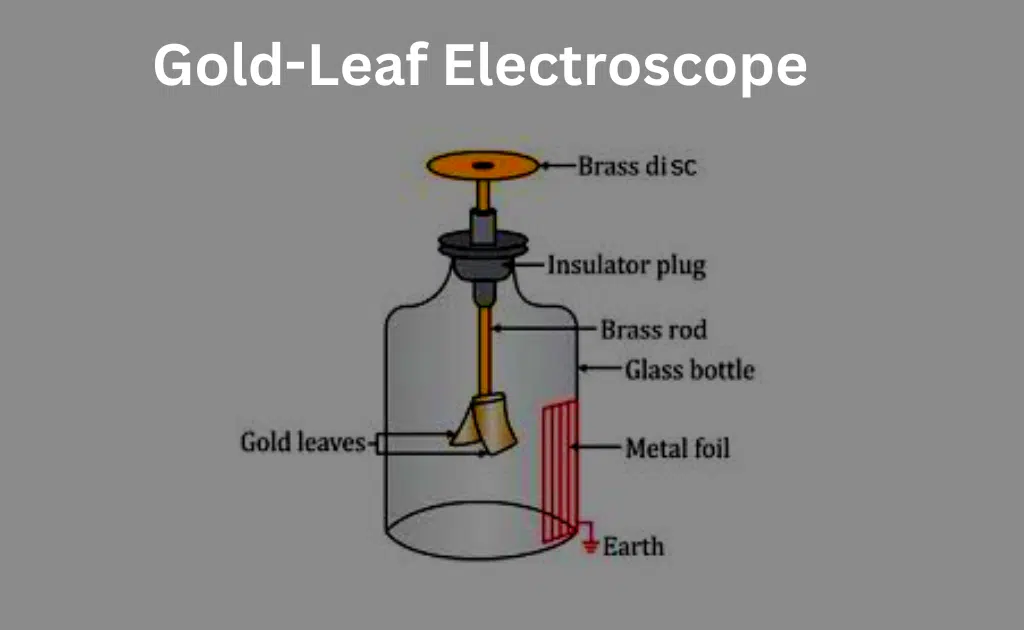Electroscope-Definition, Types, And Applications
An electroscope is an instrument that detects the presence of an electric charge or of ionizing radiation. It usually consists of a pair of thin gold leaves suspended from an electrical conductor that leads to the outside of a glass or plastic container.
Electroscope
The first electrical instrument to measure electric charge was an electroscope. William Gilbert, a British physician, invented the versorium, a pivoted needle, in the 16th century.
The two classical types pitch-ball and gold-leaf are still used in physics to demonstrate the principles of electrostatic. The quartz fiber radiation dosimeter uses a type of electroscope. Victor Hess an Austrian scientist used an electroscope in the discovery of cosmic rays.
An electroscope is a scientific instrument that detects the presence of an electric charge on a body. This method detects the charge of a target object by measuring the movement of a test object which is due to the Coulomb electrostatic force between the target object and the test object.
The charge on an object is proportional to its voltage. The accumulation of enough charge to detect with an electroscope requires hundreds or thousands of volts, so electroscopes are used with high-voltage sources such as static electricity and electrostatic machines.
It’s a very rough estimate. An electroscope can tell you roughly how much charge there is in an object, but if you want to know precisely how much charge there is, you need to use an electrometer.
Working of Electroscope
If you know the working principle of an electroscope, it is based on the atomic structure of elements, the charge induction of elements, the internal structure of metals, and the idea that like charges repel each other while unlike charges attract each other.
An electroscope is made up of a metal detector, connected to a pair of metal leaves hanging from the bottom of the connecting rod. The metal leaves are hanging downward when there is no charge.
You don’t have to worry about anything happening because an object carrying a charge will never get close to an electroscope. When the charge is positive, the electrons in the metal of the electroscope move upward.
Like charged atoms will repel each other when leaves are negatively charged. The charge is removed from the atoms, the electrons are back to their original positions, and the leaves relax.
The electrons in the metal of the electroscope move toward the leaves when the charge is negative. The leaves gain a temporary negative charge, causing them to repel each other.
When the charging is done, the leaves relax, then the electrons return to their original position.
Types of electroscope
There are two classical types of electroscope.
- Pitch-Ball Electroscope
- Gold-Leaf Electroscope
Pitch-Ball Electroscope
The pith-ball electroscope was invented in 1754 by English schoolmaster and physicist John Canton. It consists of one or two small balls of a lightweight nonconductive substance, suspended by silk or linen thread from the hook of an insulated stand.
Some of the charges on the surface of the charged object move to the surface of the ball when touched by the pith ball.
The ball can be used to distinguish the charge on other objects because it will be repelled by objects charged with the same polarity or sign it has.
Gold-Leaf Electroscope
The gold-leaf electroscope is a more sensitive instrument than a pith ball or straw blade and was developed in 1787 by Abraham Bennet, a British clergyman, and physicist.

The gold leaves spread apart in an inverted ‘V’ when the metal terminal is touched with a charged object. The leaves repel each other when they receive the same sign charge because they are conducted through the terminal and metal rod.
If the terminal is grounded by touching it with a finger, the charge is transferred through the human body into the earth and the gold leaves are close together.
Applications of ELectroscope
- The electroscope is used to detect static charges.
- By using the electroscope we can detect the nature of electric charges.
- We can compare the magnitude of two different charges with the help of an electroscope.







Leave a Reply